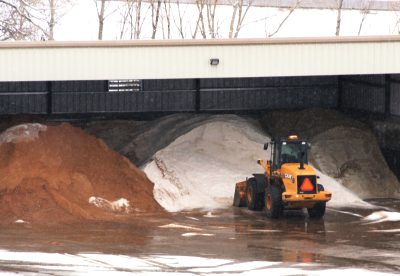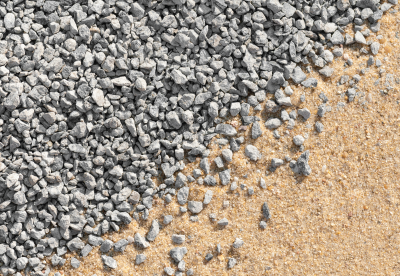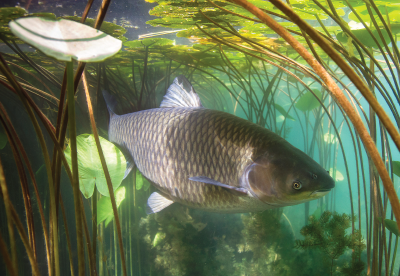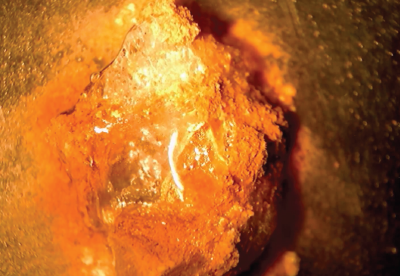Date July 28, 2020 | Brooke Loeffler
Deicer Impact on the Environment
The environmental impact of deicers varies and depends on many factors.
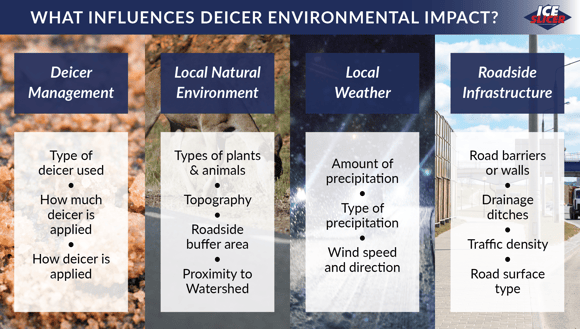
These factors breakdown into a few main categories:
- Deicer Management (type of deicer used, how much is applied, how it is applied)
- Local Natural Environment (type of plants and animals found along the roadside, topography, buffer area size, proximity to watershed)
- Local Weather (amount of precipitation, type of precipitation, wind speeds and direction)
- Roadside Infrastructure (road barriers or walls, drainage ditches, traffic density, road surface type)
Let’s take a closer look at how deicers transfer from the road into the surrounding environment.
How Deicers Transfer from the Road into the Environment
Unfortunately, to some extent, every substance found on a road surface (such as engine fluids, road debris, litter) finds its way into the surrounding natural environment. Reducing a roadway’s impact on the environment requires planning, attention, and continual care. There are a few different ways deicing materials transfer from the road into the surrounding environment.
Bounce and Scatter
During application, granular deicers can sometimes bounce and scatter away from the road surface and onto the roadside. The most common way to reduce bounce and scatter is to treat the product with a liquid at the spinner. This can reduce bounce and scatter by up to 30%. Another strategy to prevent excessive bounce and scatter is to select a deicer with a coarse surface texture, and with a mixture of large and small granules.
Runoff
The goal of all deicers is the formation of liquid brine to break the bond between ice and the pavement. Road inclines and slopes can cause this brine to run off to the roadside. When deicing materials are over-applied, brine levels increase, and the amount of potential runoff increases as well. Weather patterns can also increase runoff, especially when rainfall follows ice and snow.
Spray
As vehicles drive over the briny surface, tire treads fling and spray brine into the air and onto surrounding plants and soil. During heavy winter storms, snow plows sometimes need to revisit roadways for additional ice clearance. Snow plow spray reaches even farther than typical road vehicles.
Dehydrated Residue
When excess deicing brine dries and re-solidifies on a road surface, it can be flung or blown to the roadside by both wind and vehicle traffic.
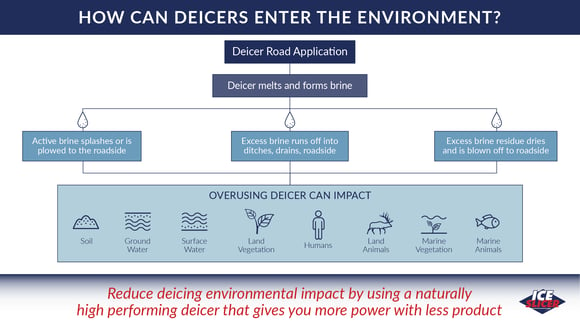
Deicer Impact on the Environment
There are a few observations that help you make sure you are not using too much deicing material.
Soil
Sodium chloride (white rock salt) can bind to soil particles and decrease soil permeability. This decrease prevents other nutrients from being distributed throughout the soil so they can be absorbed by plant roots. In excess levels, positively charged chlorides can also exchange with negatively charged heavy metals in the soil. This exchange can release these heavy metals and mobilize them into the environment.
Vegetation
Excess salt levels dehydrate plants and reduce the osmosis process that allows roots to intake water and nutrients. This can slow and inhibit new plant growth. When surplus brine sprays onto plant leaves it can also cause leaf burn and scorching.
Groundwater
Soil is an excellent natural filter. However, some substances (such as the heavy metals mentioned above) leach through the soil into groundwater, which then can make its way into reservoirs and natural bodies of water.
Bodies of Water (Humans, Marine Plants and Animals)
Increased levels of salt and chlorides reduce the amount of dissolved oxygen in a body of water. Decreased oxygen in the water creates anoxic conditions that impact marine plant and animal health. Elevated salt and chloride levels can also create man made haloclines (where salty water sinks to the bottom and fresh water rises to the top). This impedes water circulation and flow that keeps the body of water healthy. Healthy bodies of water are used by humans, plants, and animals alike.
Animal Life
The increased presence of salt on the side of the road can create an artificial salt lick that attracts wildlife (such as birds, deer, moose, and other grazing animals). More wildlife near a roadway naturally increases the likelihood of animal/vehicle accidents. Animal feeding and nesting practices can also be impacted if plant growth reduces.
What Can Be Done?
So how do we balance road safety with environmental responsibility?
Snowplow Calibration
When using a combination snow plow/granular deicer spreader, be sure to calibrate your plow correctly. Proper calibration ensures you are not over-distributing your deicer and makes sure it spreads evenly across the pavement surface.
Use in Responsible Amounts
The most effective way to balance road safety and environmental responsibility is to use deicer in responsible amounts. It is difficult to treat soil and water sources that have been overexposed to salt, therefore it is better to reduce the amount of deicer used.
Use the Right Deicer
Fortunately, using less deicer doesn’t mean you have to compromise on safety. Higher performing deicers enable you to get more deicing power from less product. Avoid deicing materials with added dyes and liquid chemicals that quickly leach out and damage the environment. Make sure you choose a granular deicer with coarse and diverse grain sizes that reduces scatter and keeps the product where you want it. You can jump-start granular deicers by pretreating--this is especially effective in very cold temperatures. Pretreating reduces the required application rates as well as bounce and scatter.
Ice Slicer and the Environment
Ice Slicer is an OMRI-certified organic blend mined from a naturally formed halite deposit in Utah. It contains no added dyes or additional chemicals and is naturally high performing. Ice Slicer contains a homogeneous blend of over 60 naturally occurring minerals that not only buffer the effects of chlorides on the environment, they have also proven to be beneficial to plant life when used in the correct concentrations.
Click here to learn about how Ice Slicer has become an essential part of Denver's environmental deicing goals.
Measurable and Visible Environmental Benefits
Just south of the town of Levan, Utah, Ice Slicer was used along Highway 28 during the winter months. When spring came around, the vegetation along the roadway was much more lush, green, and healthy than the surrounding plants. In the image below, you can clearly see where Ice Slicer runoff benefited the roadside vegetation.
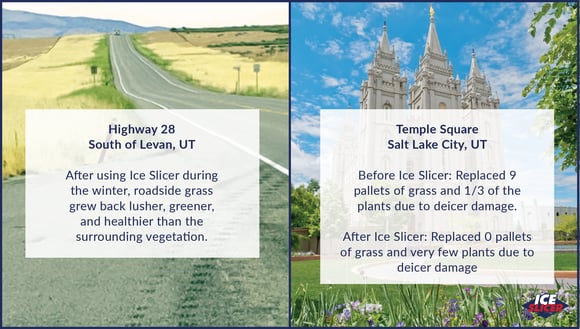
World renowned Temple Square in Salt Lake City, Utah attracts millions of visitors every year. Deicer is necessary to keep pathways safe for such high foot traffic volume, but groundskeepers need to preserve the expansive gardens as well. Before using Ice Slicer, Temple Square had to replace 9 pallets worth of grass and about ⅓ of their plants due to deicer damage. After switching to Ice Slicer, they reported that no grass and only a few plants needed to be replaced due to deicer use.
© 2023 Redmond Minerals Inc.
